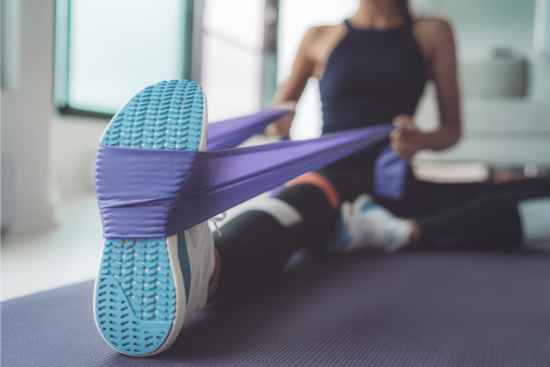-
Home
-
Plantar Fasciitis Exercises: Relief Through Movement
Plantar Fasciitis Exercises: Relief Through Movement
January 8, 2025
 Plantar fasciitis is a common foot condition characterized by inflammation of the plantar fascia, the thick band of tissue that spans the sole of the foot. This inflammation often causes sharp, stabbing pain near the heel, particularly with the first steps in the morning or after periods of rest. While the discomfort can be frustrating, targeted exercises and consistent self-care can alleviate symptoms, improve mobility, and promote healing.
Plantar fasciitis is a common foot condition characterized by inflammation of the plantar fascia, the thick band of tissue that spans the sole of the foot. This inflammation often causes sharp, stabbing pain near the heel, particularly with the first steps in the morning or after periods of rest. While the discomfort can be frustrating, targeted exercises and consistent self-care can alleviate symptoms, improve mobility, and promote healing.
Does Plantar Fasciitis Improve with Exercise?
Yes—combining stretching exercises, strengthening routines, and self-care can significantly speed recovery. By focusing on the plantar fascia and surrounding muscles, you can alleviate pain, improve flexibility, and speed up the healing process. Below are two stretches to help loosen tight tissues in the foot and calf.
Plantar Fascia Stretch
- Starting Position: Sit on a chair with your foot flat on the floor.
- Action: Gently pull your toes back toward your body until you feel a stretch in the arch of your foot.
- Duration: Hold for 15–20 seconds.
- Repetitions: Perform 10 times per day.
Calf Stretch
- Starting Position: Stand with the balls of your feet on the edge of a step or sturdy platform.
- Action: Slowly lower your heels downward to feel a stretch in your calf. Keep your legs straight.
- Duration: Maintain the stretch for about 20 seconds.
- Repetitions: Repeat 2–3 times.
In addition to stretching, rollers and cold therapy can help reduce inflammation. With any exercise, it is important to give yourself enough rest between activities to allow the plantar fascia to recover.
Common Aggravators: What to Avoid
Plantar fasciitis can be exacerbated by a range of factors, making it essential to identify and modify specific activities or habits during recovery. By avoiding the following common pitfalls, you can minimize stress on the plantar fascia and facilitate healing.
1. Overuse
- The Problem: Repeated stress on the foot—such as standing for long periods or engaging in high-volume running on hard surfaces—creates micro-tears and inflammation in the plantar fascia, intensifying pain.
- How to Avoid It: Schedule regular breaks if you must stand for extended durations, consider alternating high-impact workouts with lower-impact activities (e.g., swimming), and avoid sharply increasing mileage or workout intensity too quickly.
2. Unsupportive Footwear
- The Problem: Shoes lacking proper arch support or cushioning—such as flip-flops and high heels—fail to absorb shock effectively. This adds tension to the plantar fascia, contributing to discomfort.
- How to Avoid It: Choose footwear specifically designed for support, with features like a contoured footbed, stable heel, and cushioned midsole. Orthotic inserts or insoles can further reduce strain on the arch.
3. High-Impact Activities
- The Problem: Running, jumping, or sports requiring quick directional changes place substantial force on the plantar fascia. Without adequate support or rest, these activities can worsen inflammation and delay recovery.
- How to Avoid It: Temporarily replace high-impact workouts with low-impact options, such as using an elliptical machine or taking a gentle yoga class. Once symptoms improve, gradually reintroduce higher-impact exercises under professional guidance.
Can Walking Help Relieve Plantar Fasciitis?
Walking can support plantar fasciitis recovery by increasing blood flow to the foot, as long as it is done with caution and in moderation. Short, controlled walks in supportive footwear help stimulate circulation and minimize stiffness. However, excessive walking or walking barefoot can aggravate discomfort by placing additional strain on the plantar fascia.
If walking provokes pain, consider reducing distance or speed, focusing on stretching exercises instead, or adding orthotic insoles. Orthotic insoles that provide arch support and heel cushioning may further protect the foot by absorbing impact.
Managing Plantar Fasciitis
Effectively managing plantar fasciitis depends on a balance between targeted exercises, proper rest, and supportive practices that protect the foot from further stress. First and foremost, regularly stretching the plantar fascia, calf muscles, and Achilles tendon helps maintain flexibility and alleviate tension.
Complementing these stretches with strengthening exercises for the foot and ankle ensures that the supportive muscles remain resilient. Ice therapy—such as rolling a frozen water bottle under the arch—can further reduce inflammation, while choosing footwear with suitable arch support and cushioning helps shield the plantar fascia from excessive strain.
In addition to these proactive steps, it is crucial to recognize and avoid certain aggravating factors to prevent setbacks in your recovery. High-impact activities, like running or jumping, may intensify symptoms if resumed too soon, and walking without the protection of supportive shoes can worsen pain. Equally important is paying attention to discomfort; pushing through pain often prolongs healing and can lead to more serious complications.
With patience, consistency, and the right approach, it is possible to significantly reduce pain, regain mobility, and restore an active lifestyle.